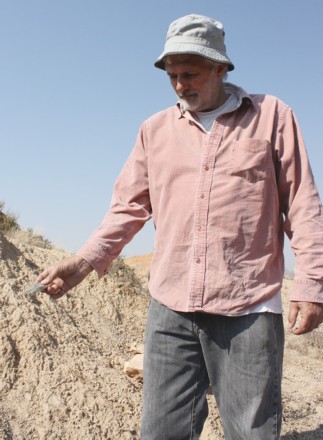
The four papers published in this volume form part of the proceedings of a conference held in June 2015 at the University of the Free State (Bloemfontein), in honour of Emeritus Professor Louis Scott. The conference, which was jointly organised by colleagues and friends from the University of the Free State and the National Museum in Bloemfontein, was a celebration of Louis’ distinguished career as a palynologist. Over the years, Louis Scott's research has had a significant impact on the fields of palaeontology, geology, climatology, geography, botany, archaeology and anthropology, and the papers in this volume reflect the broad scope of his intellectual engagement.
The first paper by Frank Neumann and Marion Bamford provides an up to date summary of what is known on the development of environments in southern Africa during the Neogene. In great detail the authors describe the complex and long-term trends in climate, hydrology and geomorphology that influenced the composition and biogeography of modern biomes of southern Africa. This paper will no doubt serve as a corner-stone for future research in this field.
The following papers report new and significant findings from three archaeological sites – Sibudu Cave (KwaZulu-Natal, South Africa), Ohalo (Israel) and Florisbad (Free State, South Africa).
Sibudu is an important Middle Stone Age site with a sequence that spans ca. 77,000 to 38,000 years BP. The paper by Christine Sievers explores the possibility that nutlets from the sedge, Cladium mariscus were utilised as a food source. Cladium mariscus has been identified at the site where the leaves were used as a floor covering or “bedding”. The author postulates that skills and knowledge of the shelter inhabitants allowed them to exploit Cladium mariscus as a food source. This could imply an early example of intensive collection and processing of a particular plant food.
The following paper, by Mina Weinstein-Evron and colleagues, details the results of a high-resolution palynological record, obtained from a dated geological section dug in the vicinity of the prehistoric site of Ohalo, adjacent to the Sea of Galilee in Israel. This site represents one of the best preserved hunter-gatherer sites in the Near East dating to the Last Glacial Maximum (LGM), with unusually well-preserved macro- botanical remains and pollen. Combined with information on lithostratigraphy and magnetic susceptibility, the palynological analysis provides a rare glimpse into the palaeoenvironmental history, not only of the site of Ohalo but also of the Sea of Galilee.
A detailed description of the hominin third molar from the Middle Stone Age site of Florisbad (dated to ca. 279,000 to 121,000 years BP) serves as the focus of the final paper by Patricia Smith and colleagues. This site is well known for a partial hominin cranium recovered in the early 1930's, but the associated tooth has been largely ignored in discussions of African dental evolution. Aside from standard anthropometric analysis of the tooth, the researchers used high resolution X-ray tomography to describe its inner anatomy, thus providing new insights into its structure. They also outline a new biometric approach for comparing teeth at different stages of development.
A final set of papers belonging to this conference proceeding will appear in another issue of this journal in 2016.
